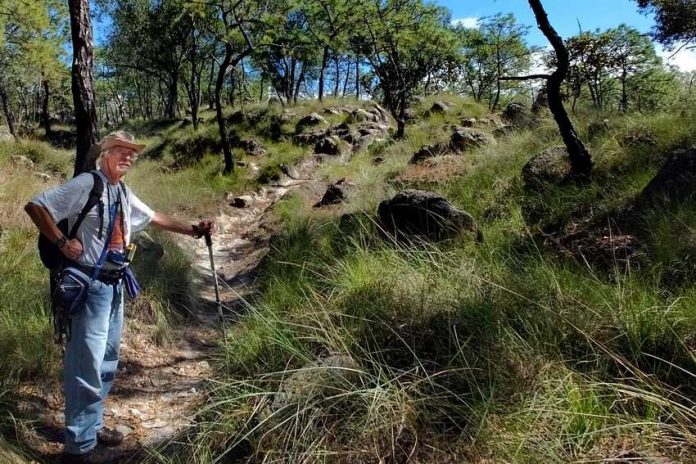Nearly fifty years ago, Dr. John Wright came to Mexico to study pyroclastic flows: great “rivers” of incandescent volcanic ash that flowed across the landscape some 95,000 years ago when a huge, explosive volcanic eruption occurred not far from what is now Tala, Jalisco, close to Mexico’s second city of Guadalajara.
Among the curiosities that Wright encountered during his two field trips in the 1970s to the woods around the little town of Tala, were rock formations that less scientific nature lovers have dubbed “fairy footstools.”
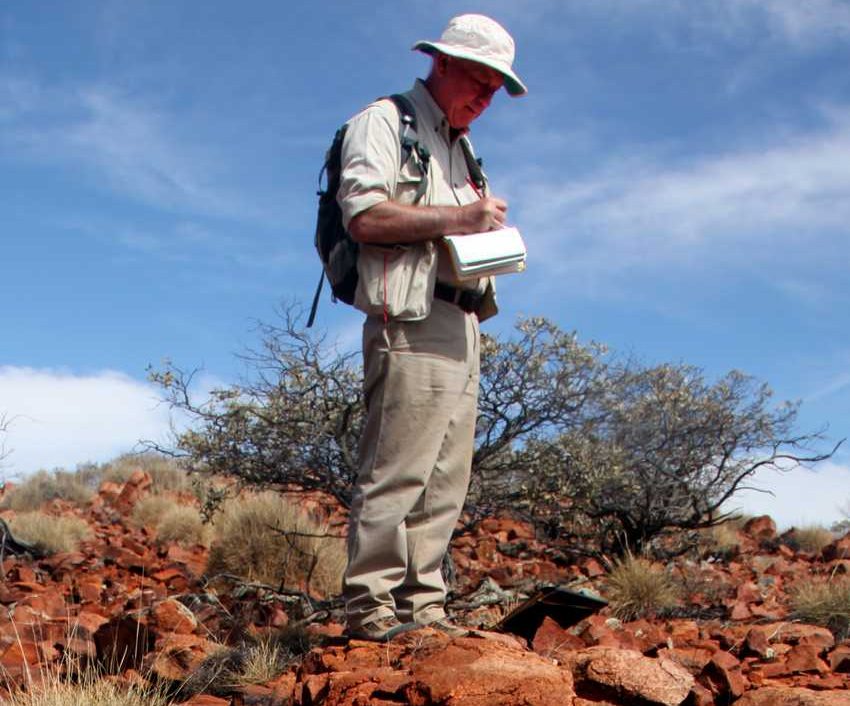
Typically they look like nicely rounded tree stumps, perhaps a foot or two high. The casual observer first sees them as cut trees, but on closer observation, they discover that they are made of stone.
In his book on Volcanic Successions, published in 1987, Wright calls them steam pipes or paleo-fumarolic pipes, formed eons ago when water vapor percolated upward through thick layers of hot ash.
“The steam bubbles,” says Wright, “altered the ash chemically, precipitating minerals harder than the surrounding ash. Wherever bubbles rose, smooth cylinders of rock perhaps over 20 meters in length, were created beneath the surface.”
The Great Wall of Pipes
The most notable collection of steam pipes is conveniently located near Parque Recreativo La Hiedra, a campsite in the Primavera Forest located 21 kilometers west of Guadalajara. Alongside this park runs El Río Salado, the Salty River, whose waters are a pleasant 25 degrees Celsius.
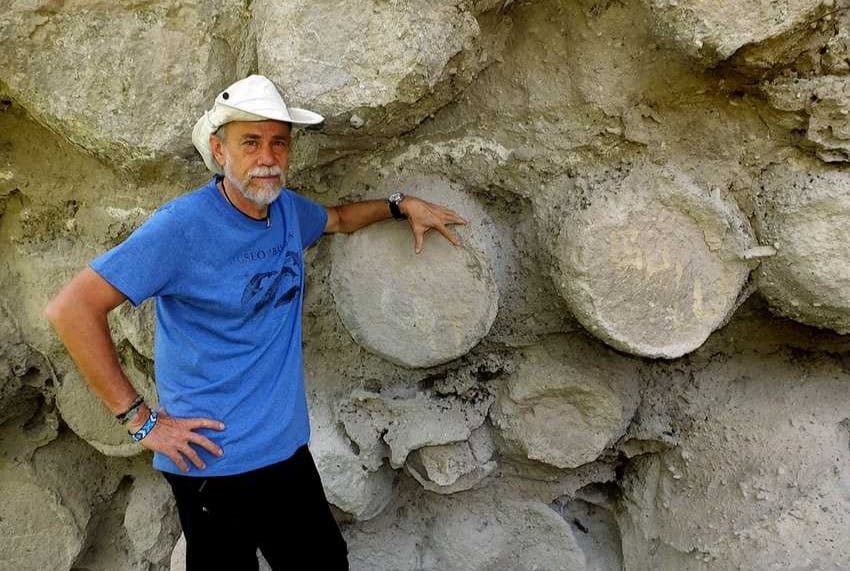
The park has dammed the river in two places to create large pools for swimming and has an extensive flat area, perfect for camping.
The Great Wall of Pipes is located 300 meters downstream. It is about 70 meters long and 25 high and is filled with hundreds of big cylinders of rock, all of them lying on their sides. This has left scientists baffled. The theory of steam bubbles rising through hot ash would result in vertical pipes, not horizontal ones. But similar walls of horizontal pipes — not as large as this one — have been found all around the Tala area, casting doubt on the theory of how the pipes were formed.
“New theories are being proposed,” says Wright, “theories that the percolation was downward — or perhaps every which way. More study is required.”
Just how it was formed remains a mystery, but one thing is certain, adds Wright: “Nothing like the Great Wall has ever been described in the literature. It appears to be unique.”
Ghosts, goblins, and happiness
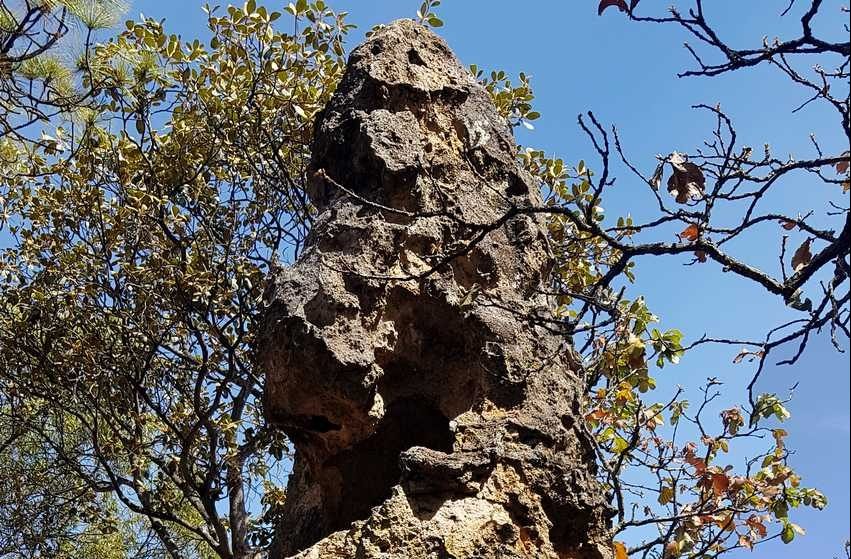
Apart from ”fairy footstools,” the environs of Tala host “goblins.” These are bizarrely shaped rocks named after similar features seen in Goblin Canyon Park, New Mexico. Unlike the pipes, these are roughly textured rocks that may take many shapes, for example, tall stately spires or curvy meandering walls, which you’d swear were man-made. Other bizarre forms may remind you of a sofa, an armchair, or a spooky version of SpongeBob Squarepants.
The best place to see the full range of these weird formations is a failed subdivision called Villa Felicidad, located directly east of Tala. Here you can drive to a path through what I call The Garden of Ghostly Delights which will take you to a tall spire known as el “Rey de los Duendes,” the King of the Goblins.
Along this short two-kilometer trail, you can see the full gamut of rock formations created by the bubbling action of steam trapped under a blanket of hot ash nearly 100,000 years ago.
The bizarre Martian Eyes
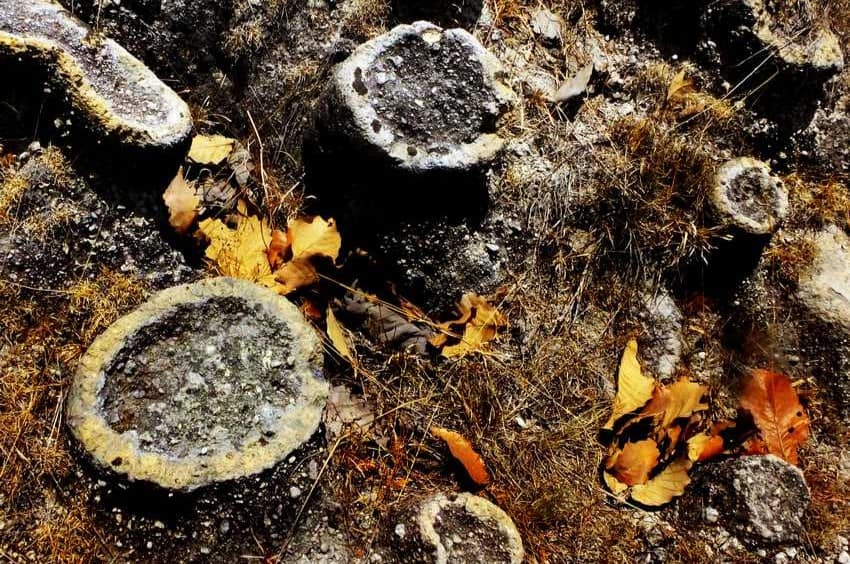
Of particular interest is the Little Wall of Martian Eyes. Yes, it’s another set of horizontally oriented pipes that definitely look like they come from another planet.
This trail parallels el “Río De Las Ánimas,” the River of Ghosts, so named because it runs through many kilometers of strange stone figures which, if seen at dusk might convince anyone that they had wandered into the realm of the undead.
Because the River of Ghosts is born inside the protected Primavera Forest, it is completely free of pollution from human sources and its mild temperature invites you to jump right in.
This path, by the way, forms one small section of a great bicycle trail called La Ruta del Gigante, The Route of the Giant. Maintained and promoted by the city of Tala, this 20-kilometer loop offers the perfect way to acquaint you with the Ghost and Goblin Park.
The Agua Dulce River is born
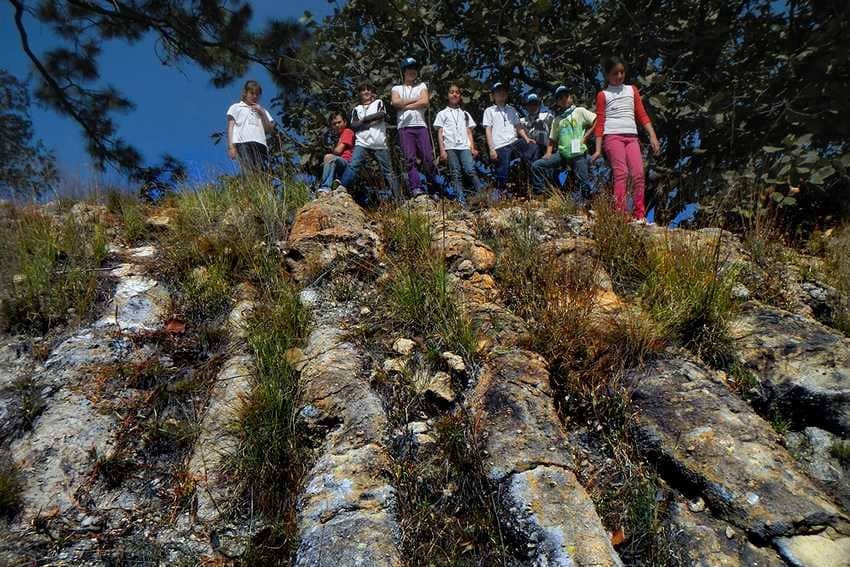
At the northern edge of the Kingdom of Ghosts and Goblins lies the Agua Dulce Park and Campsite. This is perhaps the best place to camp inside the Primavera Forest. The park is named after “the Río Agua Dulce ,” or Sweet Water River, which originates within the confines of this campsite. Drinkable, delicious, crystal clear, cold water bubbles out of the ground here, a curiosity in an area dominated by hot rivers.
Besides a natural swimming hole, this site offers restrooms, ponies, a zipline, and a high watchtower from which you can see clear across the forest to Tequila Volcano on the horizon.
A hike from Agua Dulce to the Salty River (the continuation of Rio Caliente) will take you past a nice selection of goblins and pipes. The pipes are large and lie neither horizontally nor vertically but somewhere in between, just to give the researchers another headache.
The Ghost and Goblin Park is huge, covering an area of more than 80 square kilometers.
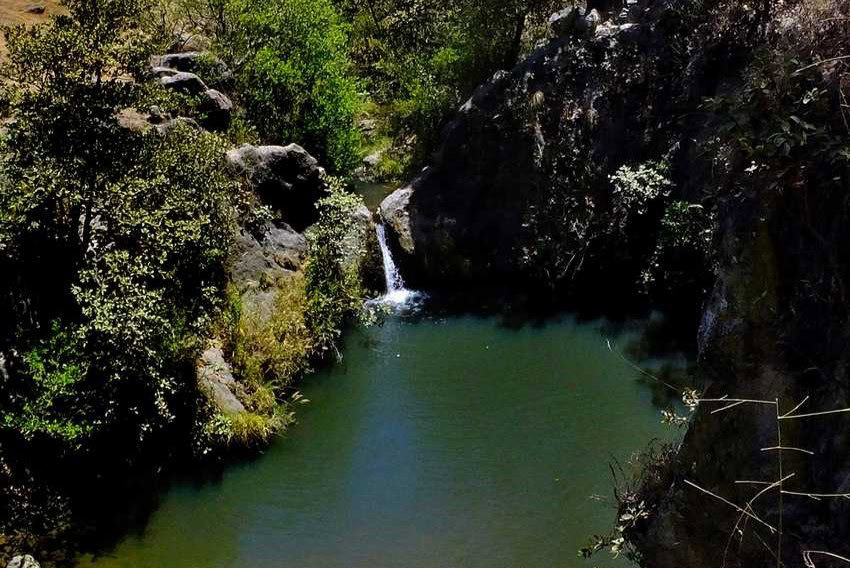
A unique natural marvel
“The next largest place displaying these phenomena is Goblin Canyon New Mexico, which measures less than a square kilometer in size, a magnitude smaller than what you will find in Jalisco,” says John Wright.
Could there be another site like this somewhere else in the world?
“We’ve been looking,” says Wright. “New Zealand has the perfect conditions for this, but if they had pipes and goblins, we would have seen photos by now. South America is another good candidate, but it’s crawling with geologists and none have reported anything like this. At the moment, Tala seems the world champion: the largest paleo-fumarolic area known on the planet.”
“And then, it has the Great Wall of Pipes,” adds Wright, with a sparkle in his eye. “Where else are you going to find something like that?”
John Pint has lived near Guadalajara, Jalisco, for more than 30 years and is the author of A Guide to West Mexico’s Guachimontones and Surrounding Area and co-author of Outdoors in Western Mexico. More of his writing can be found on his website.
